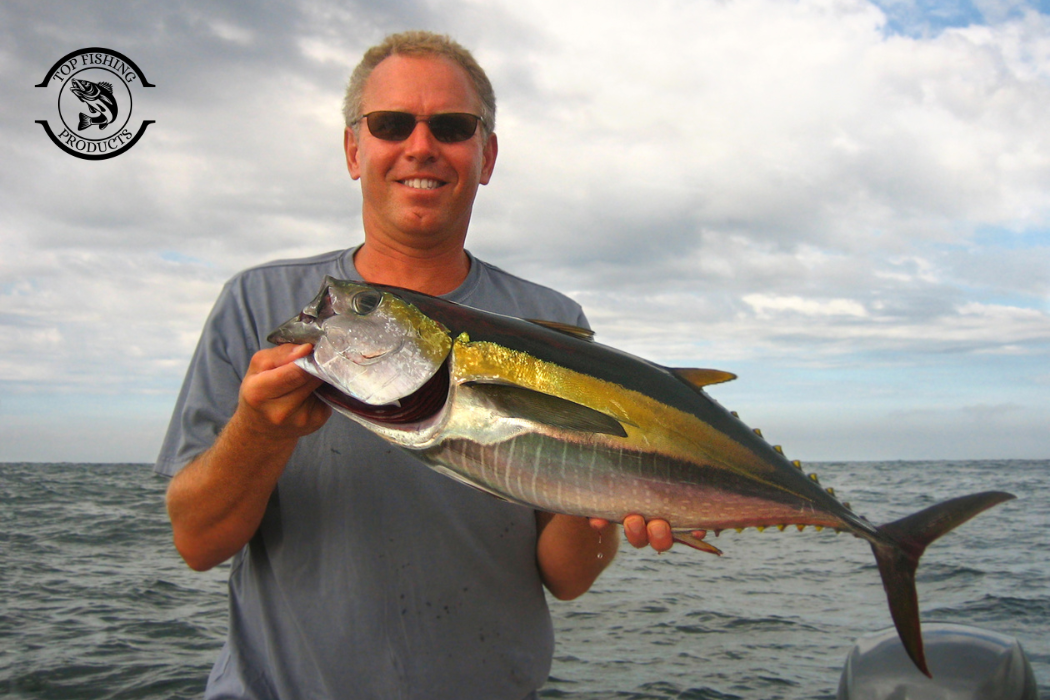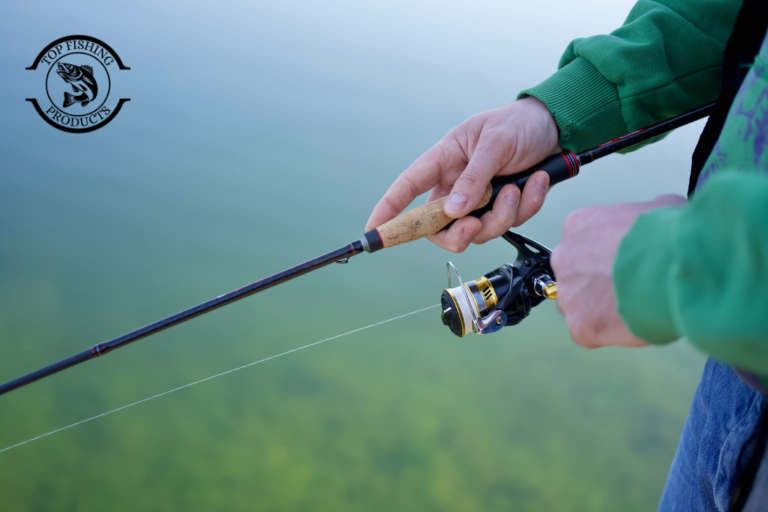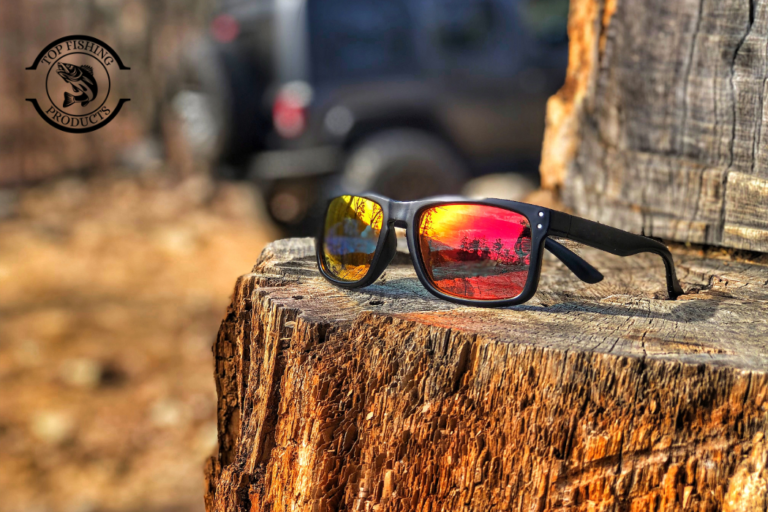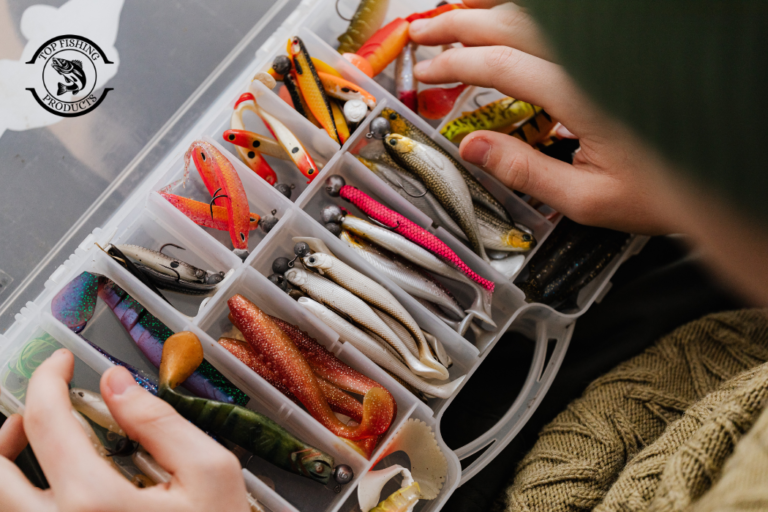Tuna is one of the most popular species in the sea, and fishing is an exciting and age-old activity. Because of its size, speed, and delicious flesh, it is not only an exciting catch but also a rewarding one. People travel far into deep waters to learn how to catch a tuna fish, since tuna fishing is so popular in many parts of the world. Tuna fishing is for you if you’ve ever dreamed of catching a fish that weighs hundreds of pounds and puts up a battle like no other.
Everything you require to catch a tuna fish will be covered in this article. We’ll go over the basics, such as what tuna are, where to find them, when to catch them, and the different fishing techniques. By the time you finish this article, you will have a solid understanding of how to prepare for a tuna fishing trip and how to increase your chances of success. Let’s explore how to catch a tuna fish:
What is a Tuna Fish?
Tuna is a saltwater fish that is part of the mackerel family. Tuna are known for their incredible speed, strength, and long-distance migration, which sets them apart from most other fish. Because of their torpedo-like bodies, tuna can swim quickly in water. Others, like the Atlantic bluefin tuna, grow to huge sizes, weighing more than 1,000 pounds.
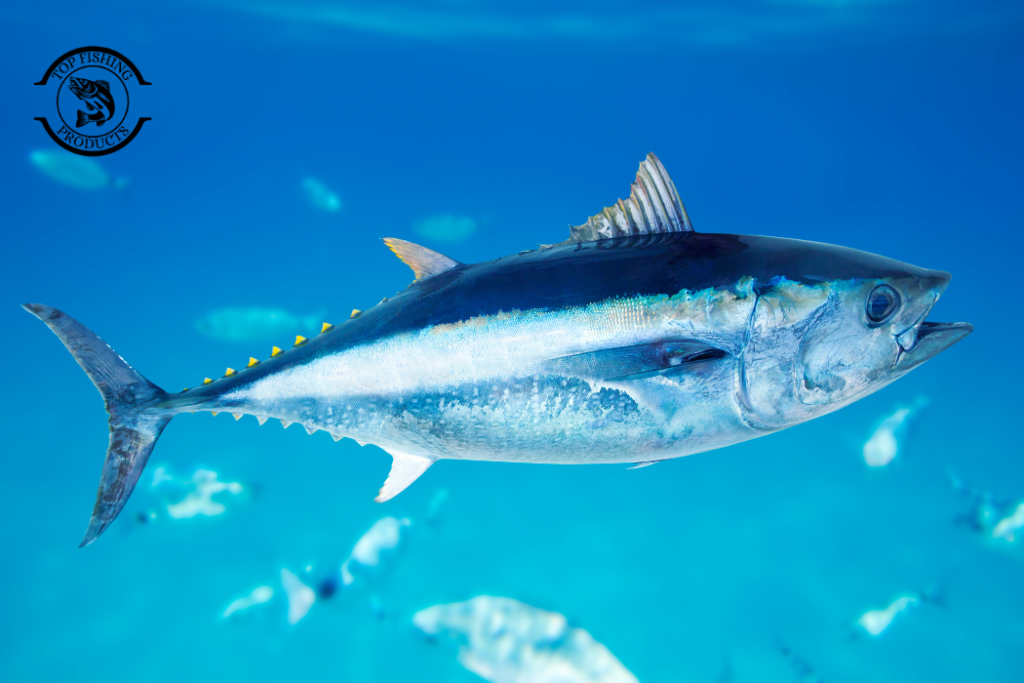
Although there are many different types of tuna, anglers most commonly target albacore, skipjack, bluefin, and yellowfin tuna. While the size range and favored habitat of each species may differ, they are all powerful opponents that will test your fishing skills. When it comes to cooking, tuna is also very beneficial, especially for sushi, steaks, and canned goods. Tuna fish are so popular that they are both an activity and a food source.
Tuna swim quickly and move in groups. They typically hunt small fish like mackerel, anchovies, and sardines. If you know where their food sources are, it will be easy to catch them. The secret to knowing what are the methods of tuna fishing? It is to understand what they do in the ocean.
Where to Catch Tuna
The location is one of the most important factors when it comes to capturing tuna. Tuna usually live in deeper offshore seas than smaller fish, which may be closer to the land. Since they are migratory animals, their movements throughout the oceans depend on the season and water temperature.
Warm waters with a lot of baitfish are one of the best places to find tuna. Although tuna can be found in the Atlantic, Pacific, and Indian oceans, the Gulf of Mexico, the waters surrounding Hawaii, the California coast, the Mediterranean Sea, and the waters off the coast of Japan are some of the most popular locations.
Keep an eye out for signs of marine life while you’re tuna hunting. Tuna will most likely catch baitfish from below when birds dive into the ocean, which usually means that the baitfish are near the surface. Additionally, keep an eye out for patches of seaweed or floating trash, as these are common feeding locations for tuna. Offshore structures, temperature breaks, and current lines are also excellent locations.
Now we are going to discuss the best timing and the best way to catch tuna for a successful fishing experience. Let’s get into:
1. Best Way to Catch Tuna
So, what’s the greatest way to catch tuna? In reality, it truly depends on your location, the tuna’s size, and your equipment. Trolling with artificial lures is the most reliable technique for many anglers because it can help find groups and cover a lot of water. Others find that chunking natural bait works best, especially when the tuna are gathered in one place. What to use to catch tuna?
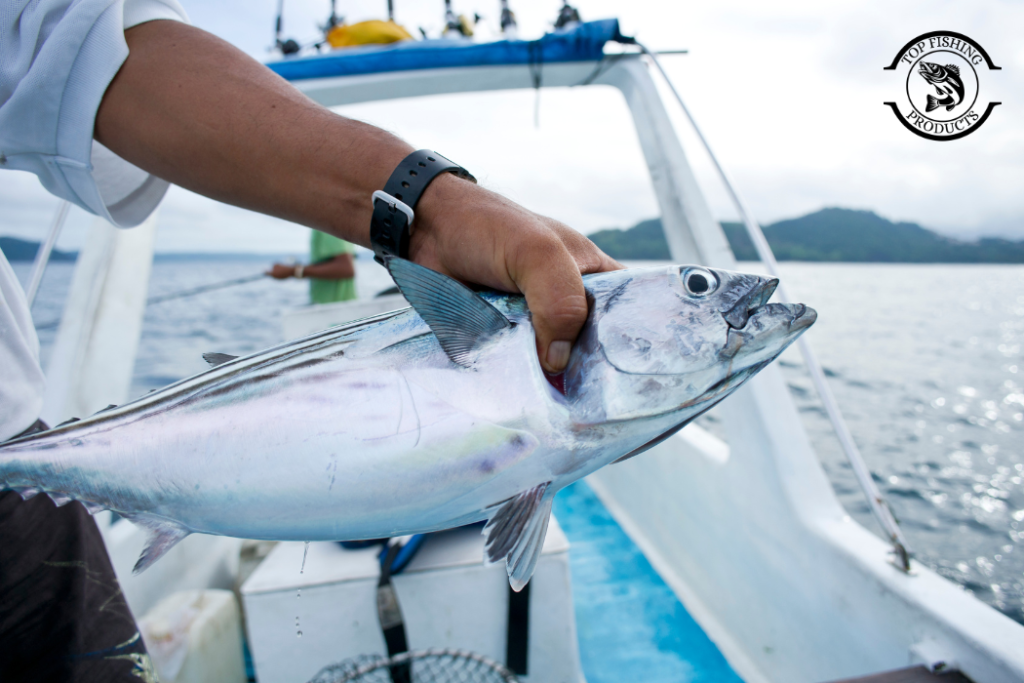
Natural baits like sardines, mackerel, or squid, and artificial lures like trolling plugs or jigs, are highly effective. The secret is always the same, regardless of the method you choose, find the tuna, use powerful tackle, and be patient during the fight. Gaining proficiency in these basics can significantly increase your chances of capturing a tuna.
2. Best Time to Catch Tuna
Like other fish, tuna are easier to catch at certain times of day and year. Best time to catch tuna? Tuna migration patterns, which are affected by season, water temperature, and food availability, determine the best time of year to catch them. In general, late spring, summer, and early fall are the best times to catch tuna. During these months, tuna approach the surface and engage in active feeding. While bluefin tuna can occasionally be found in cold waters in the spring and fall, yellowfin tuna can be taken in warm waters in the summer.
The time of day is also important. Low light levels, such as those in the early morning and late afternoon, are when tuna are most active. However, they also feed quite hard at night, especially when the water can be seen by a bright moon phase. Staying on the water during peak hours will increase your chances of success when trolling offshore.
Step-by-Step: How to Catch Tuna
Tuna fish can be a challenging process, but with the right technique and approach, you can easily improve your chances. Here are the simple step-by-step details that will guide you on how to do it:
- Starting with the preparation of the equipment that you will use next. Make sure that your equipment is suitable for the powerful tuna fish. It includes the best rod, reel, and line. Bobber is optional, it’s up to you to take it.
- Select the location or your regions where tuna fish could be easily found. It includes deep grounds, temperature breaks, or near groups of baitfish.
- You need to work on your fishing style on this point. Start chunking by showing small pieces of bait into the water to attract tuna fish. Now set your fishing rod, and release the hooked bait into the feeding area.
- Be ready for the instant battle when the tuna bites the bait. Without any delay, just let your reel drag. On this point, don’t try to use your power to fight the fish. Only the usage of a harness, rod, and reel is enough to have control over tuna.
- Patience is the last step, you don’t need to put pressure. Just while the tuna turns and let it bite. It depends on your luck and technique, maybe an hour or longer can be consumed while waiting for the tuna to come.
Fishing Techniques for Tuna
Tuna can be caught in many different kinds of tuna fishing techniques, and the method you choose depends on the situation, the kind of tuna, and your equipment. Trolling, which involves dragging one or more baits or lures behind a moving boat, is one of the most popular methods. This method covers a lot of ground and assists in finding tuna concentrations. Chunking is another well-liked method of luring tuna, which involves throwing broken baits into the water. Fishermen drop baited hooks into the same location when the tuna start feeding.
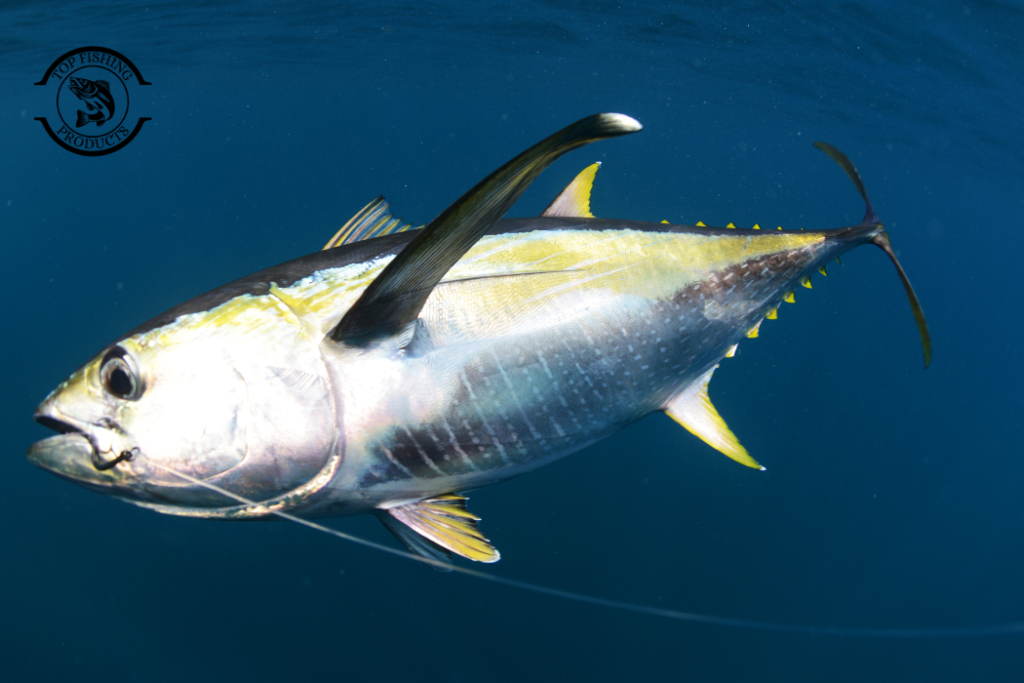
Another effective technique is jigging, especially when there are tuna deeper in the sea. Unwanted feeding of tuna on the surface can result in bites when an overweight bait moves up and down. Some places also use kite fishing, in which a kite simulates a distressed fish by keeping live bait on the surface. Using stick baits or poppers for blowback may also be exciting since you can sometimes see the tuna hit your lure at the surface. Let’s explore more techniques:
1. Tackle and Gear for Tuna Fishing
Since tuna are large and powerful, you will need strong fishing gear. Catching tuna requires heavy-duty equipment that is capable of handling the force of a fish weighing hundreds of pounds, unlike lesser species like flounder. It is recommended to use a high-capacity reel to keep a lot of strong fishing line when used with a strong rod with big action. Big-game gear is needed for bluefin or yellowfin tuna, while medium gear is suitable for skipjack or albacore tuna.
For large tunas, fishermen may use 100-pound test lines, although often they use a braided line of 50 to 80 pounds. As tuna can produce strong, long runs that can easily damage weak gear, your reel needs a smooth drag system. When fighting a tuna, anglers typically use harnesses and defensive belts to provide them extra support. Without these devices, the battle quickly becomes exhausting.
2. Natural Baits for Tuna
As fish predators, tuna eat squid, small fish, and other marine life. One of the best ways to fish for them is with natural bait. The best baits are sardines, anchovies, mackerel, herring, and squid, either full or chopped.
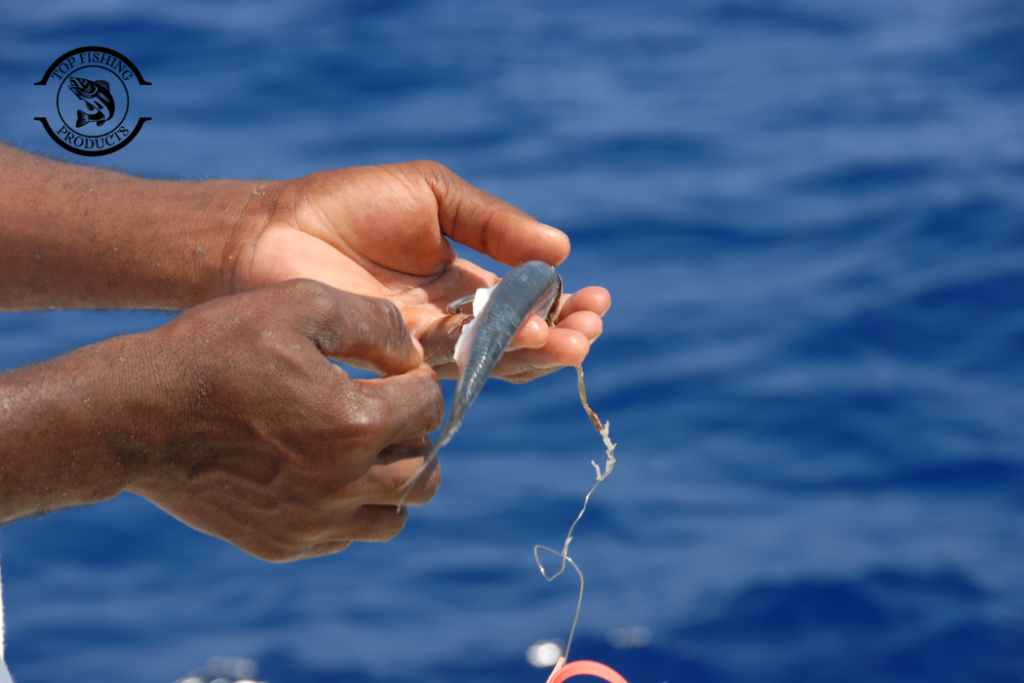
Because live bait flows organically in the water, it is typically the most attractive to tuna. However, cut bait can also be effective when chunking or chumming, which involves throwing bits of bait into the water to attract groups of tuna.
Keep the bait close to the tuna’s feeding area when bait fishing. Present your bait there as well if you observe the tuna chasing groups of baitfish near the surface. Use downriggers or weights to bring the bait down to the desired depth if they are deeper.
3. Artificial Baits for Tuna
When it comes to fishing for tuna, artificial lures work well too. Artificial baits can search vast areas of water in a couple of seconds by copying the behavior of baitfish. Trolling plugs, feather jigs, soft plastics, and poppers are some of the most popular artificial lures for tuna.
Colors play an important role in lure selection. Since they resemble little fish flashing in the water, bright colors like pink, blue, green, and silver usually work really well. Brighter lures will attract attention in filthy water, whereas natural color tends to work better in pure water.
When tuna are feeding far below the surface, jigs are also an effective tool. The movement of an injured fish tends to trigger a strike, so you can reproduce it by free-falling a jig and then quickly jerking it up and down.
4. Safety and Handling Tuna
Even out of the water, tuna are big and powerful. Take care of them. To avoid cutting, gloves should always be used when handling fishing lines or leaders. When the fish is within reach of the boat, it should be secured with a net or hook.
Bleeding the tuna as soon as it is caught will improve the quality of the meat if you plan to eat it. To keep the fish fresh, place it on ice right away. Recover the tuna before releasing it, handle it carefully, and minimize the amount of time it is out of the water.
Benefits of Fighting Big Tuna
One of the hardest fishing challenges is fighting tuna. These fish will test the limits of your patience because they are swift and strong. Staying calm and letting your equipment do its job for you are the keys to success.
Keep your line taut at all times, allowing the tuna to let go will allow it to escape. Instead of using just your arms to control the pressure, use your entire weight and a fighting harness. Because tuna can snap your line if there is no flexibility, keep your drag setting hard but not too hard.
When attempting to catch large tuna, teamwork is important. It is easier to keep the line from tangling or breaking if someone is operating the boat while you reel. Carefully bring the tuna onboard the boat using a gaff or net as it approaches.
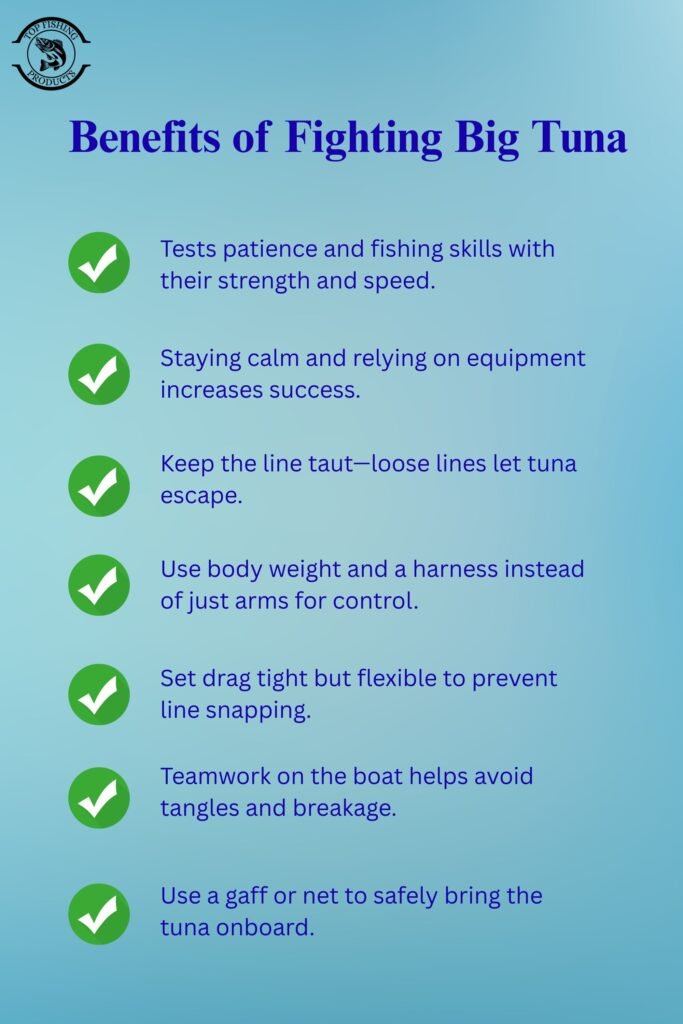
Extra Tips for Beginners
At first, fishing for tuna may seem difficult, but it becomes simpler with practice. Keep an eye out for any signs of aquatic life, such as baitfish splashing or birds diving. To play it by ear, bring both natural and artificial baits. Because tuna fishing excursions often continue all day offshore, pack lots of water and be prepared.
Above all, exercise patience. When you do catch a tuna, the hours of waiting will have been worth it. You will learn more about the behavior of these fish and how to catch them on each trip.
The Final Verdict
Learning how to catch a tuna fish is both a challenge and an adventure. Every step of the procedure, from setting up your gear to finding the fish and then fighting it, requires focus and persistence. For any fisherman, catching a tuna is an achievement because they are among the strongest marine species.
What tuna are, where to find them, when to fish for them, what gear you’ll need, and the best methods for using them have all been covered in this article. You can realize your goal of catching tuna by applying patience and these methods.
You will make lasting memories whether you are fishing for albacore, bluefin, or yellowfin tuna. It’s more than just fishing, it’s also about the excitement of being out on the open sea, learning new things, and proving yourself.
Frequently Asked Questions:
What is the easiest tuna species for beginners to catch?
Skipjack and albacore tuna are the easiest for beginners because they are smaller and often travel in large groups. They are also more common in many coastal areas.
Do I need a boat to catch tuna?
Most tuna are found offshore, so having a boat is the best option. However, in some areas, smaller tuna can be caught from piers, jetties, or nearshore waters.
How big can tuna get?
Tuna sizes vary by species. Skipjack tuna may weigh around 10–20 pounds, while giant bluefin tuna can exceed 1,000 pounds. The size will determine the gear you need.
Can you catch tuna with artificial lures only?
Yes, many anglers successfully catch tuna using artificial lures while trolling or casting. However, natural bait often increases your chances, especially in areas where tuna are feeding.
How long does it take to reel in a tuna?
The time depends on the size of the fish. Small tuna may be landed in minutes, but giant bluefin tuna can take several hours to reel in.
Is tuna fishing dangerous?
Tuna fishing can be physically demanding and sometimes dangerous because of the size of the fish and offshore conditions. Always use proper safety gear and fish with experienced anglers when targeting big tuna.


